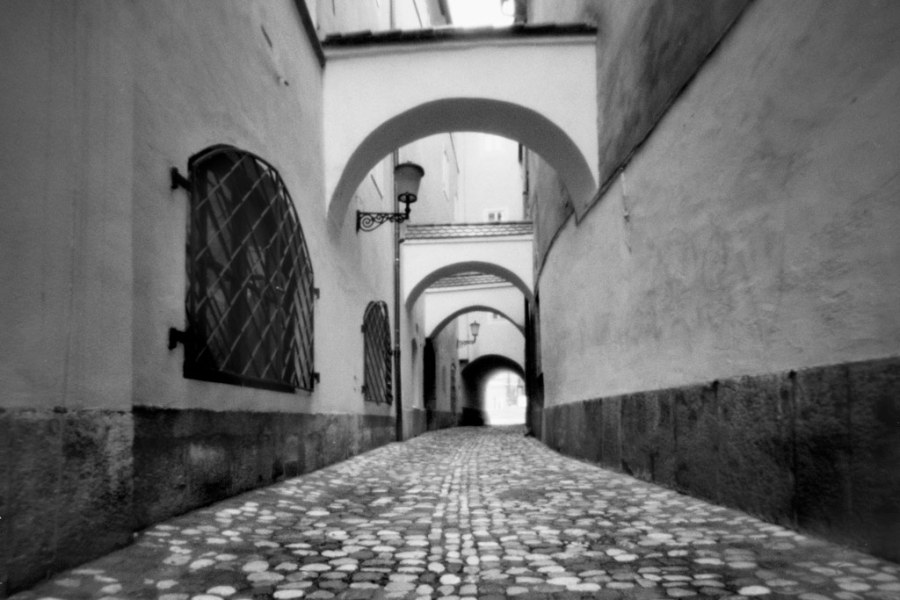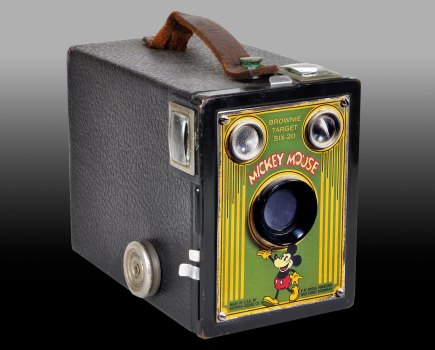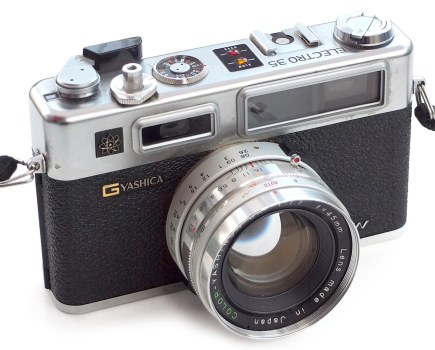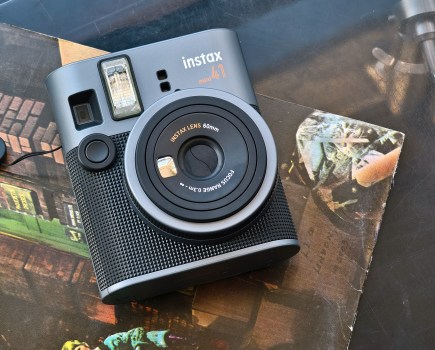Film photography expert Mike Crawford speaks to the founder of Ondu, Elvis Halilovic, about the success of its wooden camera range, the practicalities of running a business and sourcing local materials, and what’s coming next…
In recent years, the continual growth in analogue photography has seen an increase in smaller companies producing bespoke products, materials and equipment. While the leading manufacturers of cameras have yet to re-enter this expectant market (although Ricoh has announced plans for a possible new Pentax 35mm camera), there are many producers worldwide making specialist film cameras and accessories.
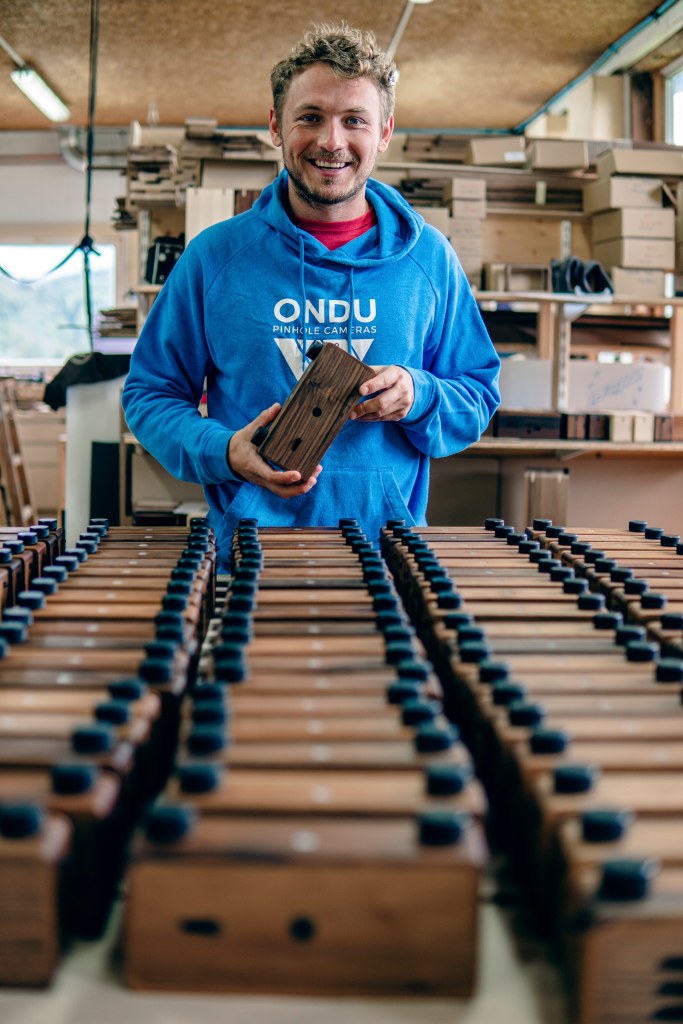
Elvis Halilovic, founder of Ondu cameras in his workshop in Velenje, Slovenia, amidst production of his Mk III Multiformat 6×12 cameras. www.ondupinhole.com, Instagram: @ondu_cameras
I first met and interviewed Elvis Halilović, founder of Ondu, in Slovenia ten years ago, when his first handcrafted pinhole cameras were launched through crowdfunding and social media. I remember his surprise at the success of the campaign, which he had hoped would raise $10,000 in orders, but instead provided an impressive $120,000. Recently, I had the chance to catch up with Elvis and discuss the continued interest in his range of wooden cameras, their development through different iterations, the practicalities of running his business and the upcoming launch of his new large-format camera.
Before establishing Ondu, Elvis had experimented with pinhole cameras made from shoeboxes, tin cans and other materials while studying design in Poland. On return to his hometown of Velenje, he furthered his research into pinhole photography, building his own designs from locally sourced maple and walnut. ‘At 25, I was a product designer by profession, but hadn’t planned to go into business,’ he recalled. ‘With the first Ondu cameras I made, I simply hoped to sell 100 and then go on a biking holiday round the world!’

Ondu Workshop, Velenje, Slovenia. Ondu pinhole cameras are handmade using locally sourced sustainable walnut, maple and ash, finished with a coating of beeswax and natural oils for protection. Each have a tripod mount, spirit-levelling bulb, and horizontal and vertical engraved lines to aid composition. They are supplied with a wooden exposure guide, snap-on filter adapter and protective carry bag.
These initial cameras, with distinctive and elegantly curved designs, were produced in a range of five formats, with precision-cut pinholes and manufactured by hand using sunken magnets to hold the back and winding knobs in place. The funds from their success offered Elvis the opportunity to invest in a larger workshop and manufacturing equipment and to take on additional staff.
‘The Kickstarter for the Mark One snowballed, and with the results of customers’ feedback, I implemented design changes in the Mark Two cameras. During these years I invested in new machinery, such as laser cutters, which let me work with more complicated designs and streamline the whole production. I added features and details which I couldn’t fabricate before, such as hidden shutters and snap-on magnetic filters.’
There are now 14 Ondu pinhole cameras available in a selection of different film and camera formats, (including panoramic models) from 35mm to 8x10in. ‘The dimensions of the latest Mark Three cameras are the same, but their visual design is slightly different. I’ve added eyelets and every little detail has a tiny chamfer, but the main addition is the magnetic quick-release shutter, plus a shuttered window on the back for checking the backing paper’s frame number, plus a levelling bulb and engraved lines for aiding composition. All the components inside are painted black to prevent internal reflections.’
Since the first Ondu cameras, it has been important that the wood and materials used, where possible, are locally sourced. ‘I use European walnut and everything is manufactured in Slovenia, from the camera strap eyelets to the tripod mounts. Everything is custom-made except for the magnets, levelling block and washers.’

Colour pinhole photographs tend to render a muted, softer palette, as there is no coated lens used to increase contrast, which can be very effective for landscape work. Exposures of several seconds are usually required, given the effective aperture of f160 of the pinhole. River Una, Bosnia By Elvis Halilovic, Ondu MK III 6×12 Multiformat, Kodak Ektar 100.
One of his most popular cameras is the 6×12 Multiformat, which has internal dividers to allow three different formats (6×6, 6×9, 6×12), to be shot on 120. In addition, he has produced a range of five Rise Cameras which have three separate shutters. ‘They can be used to correct horizontal perspective, like the rise and fall on large-format cameras, as it prevents having to tilt the camera up or down. The camera’s spirit level is kept at zero and the top or bottom shutter is then used instead of the central one. It’s very useful for architectural work or it can be used for exaggerating perspective, such as the spire on a church, if shooting close and tilting the camera.’
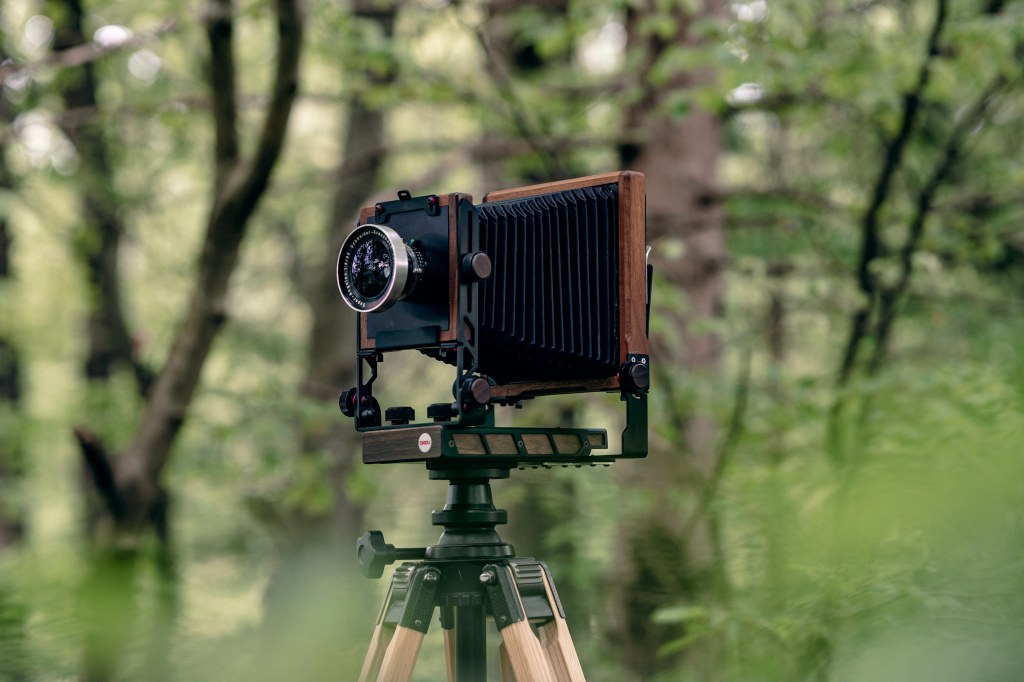
The new Ondu Eikan 4×5 camera. The Eikan large-format camera, which is currently crowdfunding on Kickstarter, is designed to be workable and straightforward to use. Elvis listed its benefits and features. ‘It’s not a technical camera, but is tactile, sturdy and relatively lightweight. My idea was also to make it modular. The camera has the main movements; rise, fall, shift, tilt, even back tilt, useful when using wideangle lenses. It has 32cm of range between lens and film, and if more is required for longer bellows, I’ve created an extension rail. I’ve also designed extra backs so it can be used as a 10x4in panoramic camera and hopefully there will also be a 5x7in back.
This led to a side project during Covid where he experimented with extra dividers inside a 6×6 Rise camera. ‘Using the three shutters, you could then separately shoot three small panoramas at 6×2 format, potentially telling a story on one frame of film,’ remarked Elvis. ‘I made about 100 kits which I sent out with a roll of film labelled ‘self-isolation creative kits,’ like Red Cross packages as a bit of fun for people self-isolating and a little reminder that despite everything, we still had photography.’
As with many small businesses, social media is an imperative tool for publicity, marketing and communicating with the community of Ondu users. ‘A lot of people post about their cameras, making unboxing videos and taking behind-the-scenes pictures of the cameras. On World Pinhole Day, I often ask the community to share photos of their cameras in action, with one person getting a free Ondu, or sometimes there are monthly giveaways for the best Ondu pinhole photo.’
During our conversation, I was both surprised and pleased to learn that Elvis and his team are not working throughout the year on camera production, but instead, maintain a more seasonal and perhaps, healthier approach. ‘I have a team I work with over winter for four to six months producing the cameras. During the summer they are paragliding, flying tandems in the countryside. I make them in batches, so I can then close the workshop and do other things.’

Ondu Pinhole user Torsten Richter is a photographer based in Schleswig-Holstein, on the North German coast, working with analogue, digital and alternative processes. He has specialised in pinhole photography for several years, using Ondu cameras, and has recently published a zine of his work. Instagram @trchtr www.trchtr.de
While he has produced and sold thousands of Ondu cameras over the past ten years, Elvis remains a dedicated product designer, and when we spoke, was in the process of preparing the launch of his next project, the Eikan. ‘I had been tinkering with a design for a large- format camera but needed to think of something different from other cameras. Last year, while hiking, an idea came out of nowhere of how strong, lightweight, folded aluminium could be used, so quickly made a sketch on my phone. Since last June, I’ve been busy working on drawings on the computer and making prototypes.’
This is a departure from how his pinhole cameras have been produced, but while it would be possible to outsource much of the production to China, and indeed more economic, Elvis believes firmly it is important, and more sustainable, to keep production local. ‘I have found manufacturers 20 minutes away from here and the anodising company is ten minutes from them, who also do the sandblasting, so it’s all within a 30km radius from the workshop. I’m working with wood and aluminium, having learnt new technical skills like laser cutting steel. The pinhole cameras are fully handmade, going through my hands maybe 50 times, but manufacturing with steel banding is highly automated, using hi-tech sensing machines, requiring much less manual labour.’
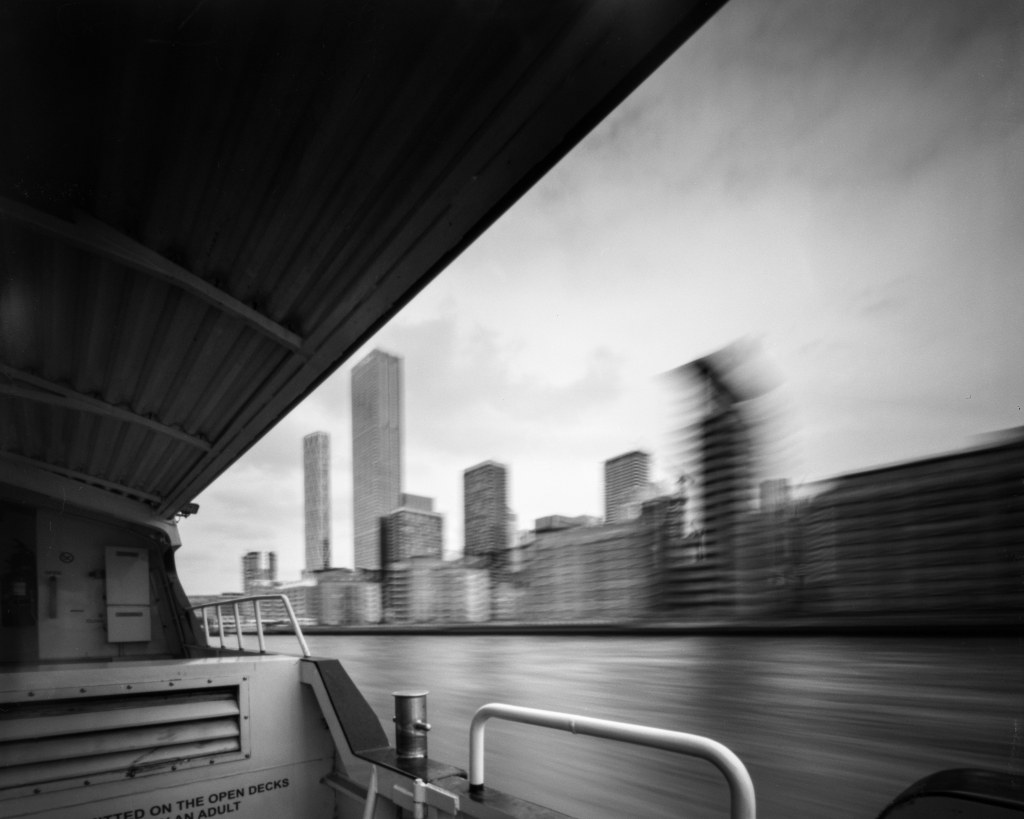
Ondu Pinhole user Helen Hooker is a UK musician and photographer working in architecture, street and automotive photography. She discovered pinhole photography during the Covid pandemic, and has since posted a daily pinhole photograph to her Instagram account. Instagram @hhpinhole www.helenhookerphotography.co.uk
While pinhole cameras remain the mainstay of Ondu, Elvis has several other ideas to develop. ‘The new camera is just one of the products that I’m going to be making,’ he confirmed. ‘Ultimately, I would like to make lenses too in the style of Petzval and Dallmeyers, which are not complicated to make. I’m also interested in wet-plate photography, and have shot a series in the Dolomites, which felt like my calling.
I have been thinking about the whole kit required on location, the eco system needed, such as the developing box and drying rack and am in touch with another Slovenian company called Zebra, who are producing dry plates. In the 1800s, there were travel laboratories for photographers, and I dream of the day I can pack it all together and go and shoot in the mountains.’
Featured image: Ljubljana, Slovenia by Mike Crawford. Ondu MK I 6×6 Pocket, Ilford FP4+. From a series shot in the Slovenian capital in 2013 using the first 6×6 Ondu. I chose to slightly crop this image, to lessen the wide angle of the pinhole and its effects of vignetting
Further Reading:
Guide to sprocket hole photograph
Analogue street photography tips
Pinhole photography: Going the scenic route
Top tips for how to get creative with analogue film photography
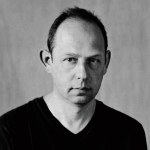
Mike Crawford
Mike is a London-based photographer and specialist printer working in urban landscape and portraiture. His work has been exhibited widely in the UK and abroad. For over 25 years he has run Lighthouse Darkroom, one of the UK’s premier photographic labs, working for many leading photographers on numerous exhibitions and publications.
www.mike-crawford.co.uk, http://www.lighthousedarkroom.com
Follow AP on Facebook, Twitter, Instagram, YouTube and TikTok.

